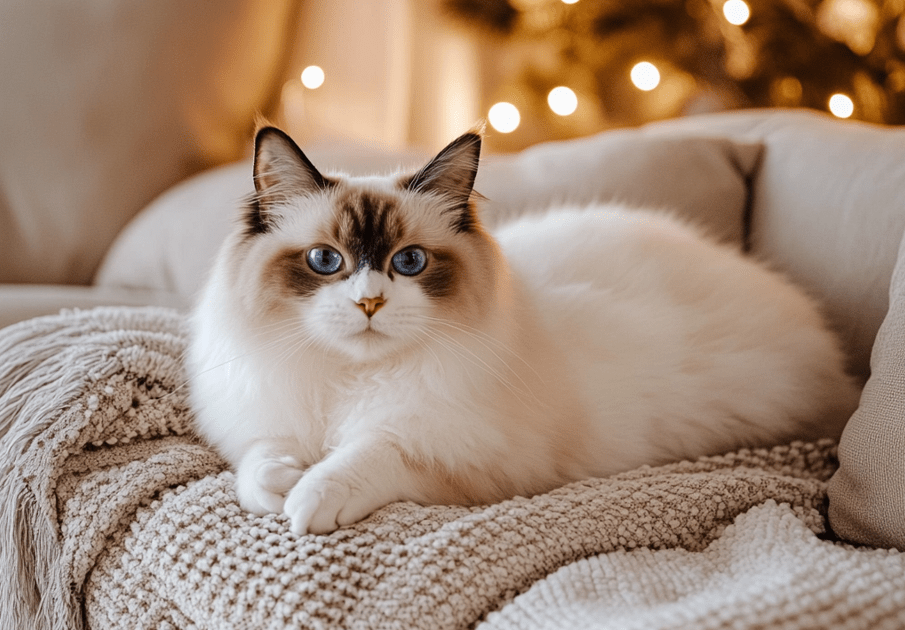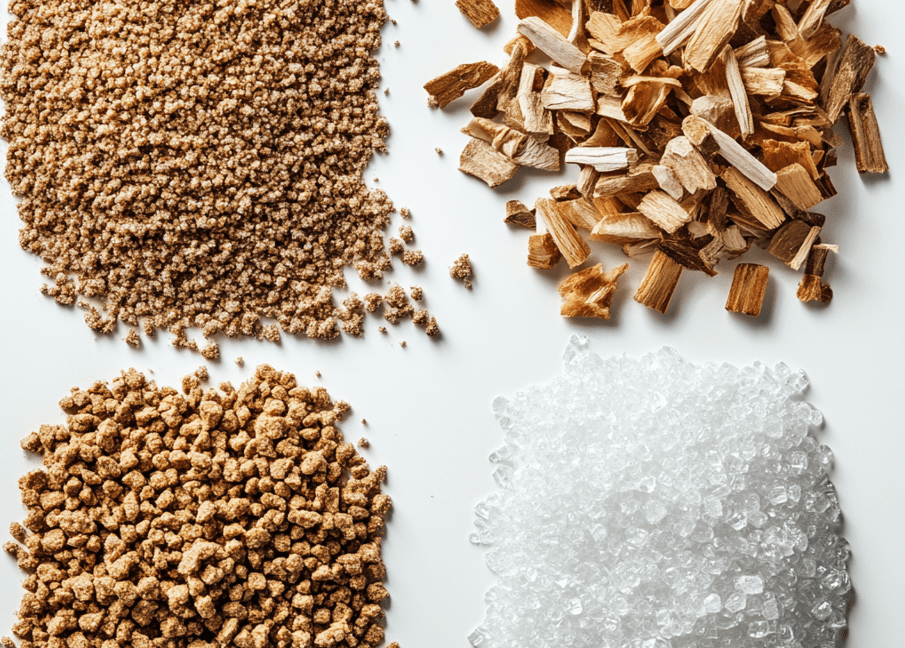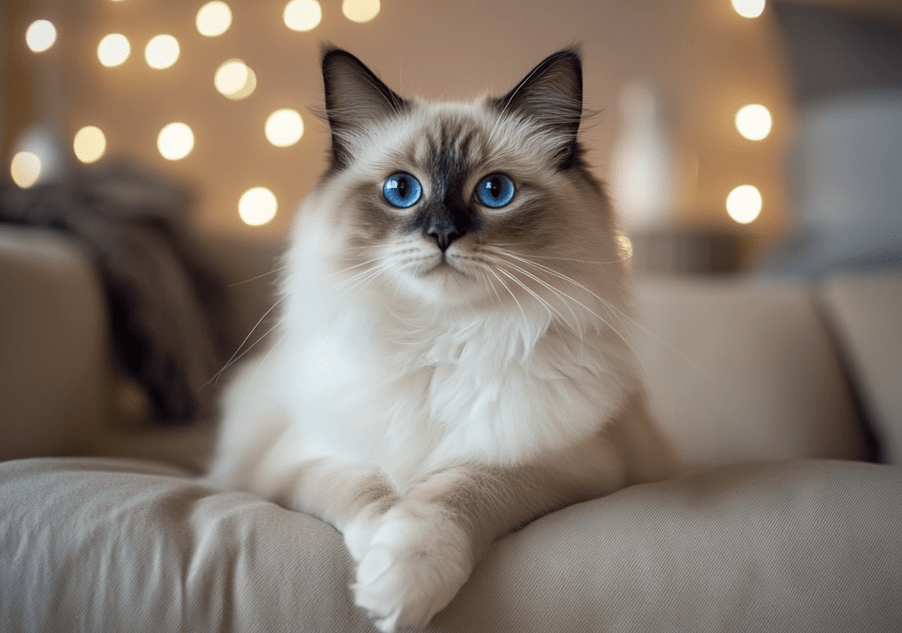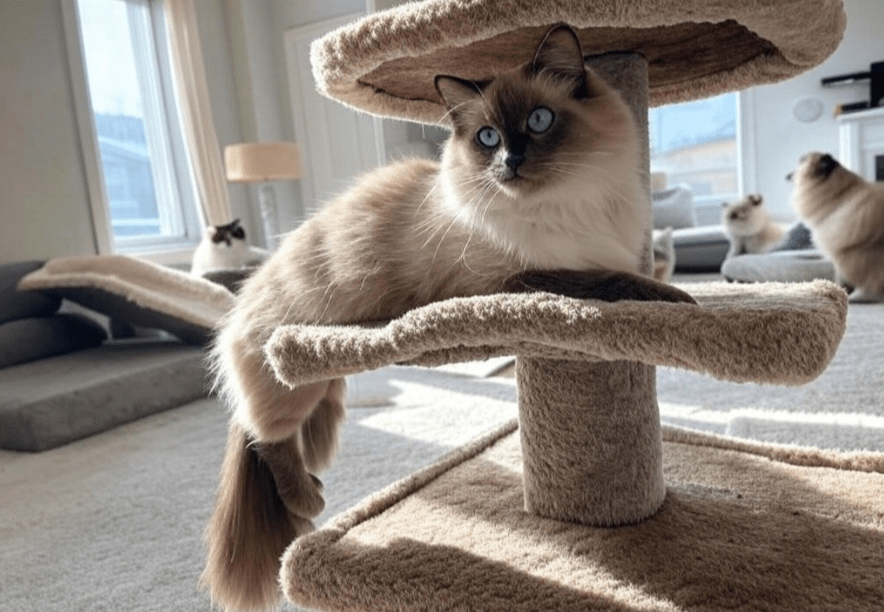
Ragdoll cats are beloved for their gentle temperament and striking appearance, but like all breeds, they are prone to certain health conditions. One of the most serious is hypertrophic cardiomyopathy (HCM), a heart disease that can affect a Ragdoll cat’s quality of life if not detected early. Recognizing the signs of hypertrophic cardiomyopathy in Ragdolls is crucial for early intervention, which can significantly improve outcomes. This comprehensive guide explains what HCM is, its prevalence in Ragdolls, early symptoms to watch for, diagnostic methods, and proactive steps to manage your cat’s heart health.
By understanding the warning signs and working closely with your veterinarian, you can help ensure your Ragdoll lives a longer, healthier life. Whether you’re a new Ragdoll owner or a seasoned caretaker, this article equips you with the knowledge to spot HCM early and take action.
What is Hypertrophic Cardiomyopathy (HCM)?
Hypertrophic cardiomyopathy is the most common heart disease in cats, characterized by the thickening of the heart muscle, particularly the left ventricle. This thickening makes it harder for the heart to pump blood effectively, leading to potential complications like heart failure, blood clots, or sudden death if untreated. While HCM can affect any cat, Ragdolls are among the breeds with a genetic predisposition, making vigilance essential.
Why Ragdolls Are at Risk
Ragdolls, like Maine Coons and Persians, have a higher incidence of HCM due to genetic mutations, such as those in the MYBPC3 gene. These mutations can be inherited, meaning kittens may carry the gene even if their parents appear healthy. Not all Ragdolls develop clinical HCM, but those with the mutation are at greater risk, especially as they age.
How HCM Affects a Ragdoll’s Heart
In HCM, the thickened heart muscle reduces the heart’s ability to fill with blood, decreasing cardiac output. This can lead to:
Reduced Oxygen Delivery: Organs and tissues receive less oxygen, causing fatigue or weakness.
Fluid Buildup: The heart’s inefficiency may cause fluid to accumulate in the lungs or abdomen, leading to breathing difficulties.
Blood Clots: Thickened heart walls can disrupt blood flow, increasing the risk of clots that may cause paralysis or stroke-like symptoms.
Arrhythmias: Irregular heart rhythms can develop, sometimes resulting in fainting or sudden collapse.
Early detection is critical because HCM often progresses silently, with symptoms appearing only in advanced stages. Understanding the signs of hypertrophic cardiomyopathy in Ragdolls empowers owners to act before the disease becomes severe.
Prevalence of HCM in Ragdolls
Studies estimate that 10–15% of Ragdolls carry the genetic mutation associated with HCM, though not all will develop clinical symptoms. The disease typically manifests in adulthood, with males being slightly more affected than females due to hormonal influences on heart muscle growth. Kittens rarely show signs, but the risk increases after 2–3 years of age.
Genetic Testing and Breeding
Reputable Ragdoll breeders often screen their breeding cats for HCM mutations to reduce its prevalence. Genetic tests can identify carriers, allowing breeders to make informed decisions. However, these tests don’t predict whether a cat will develop symptoms, as environmental factors and other genes also play a role. If you’re adopting a Ragdoll, ask the breeder about HCM screening to understand your cat’s risk.
Early Signs of Hypertrophic Cardiomyopathy in Ragdolls
HCM can be challenging to detect in its early stages because Ragdolls may appear healthy despite underlying heart changes. However, subtle signs can emerge if you know what to look for. Below are the key symptoms to monitor, along with tips for spotting them.
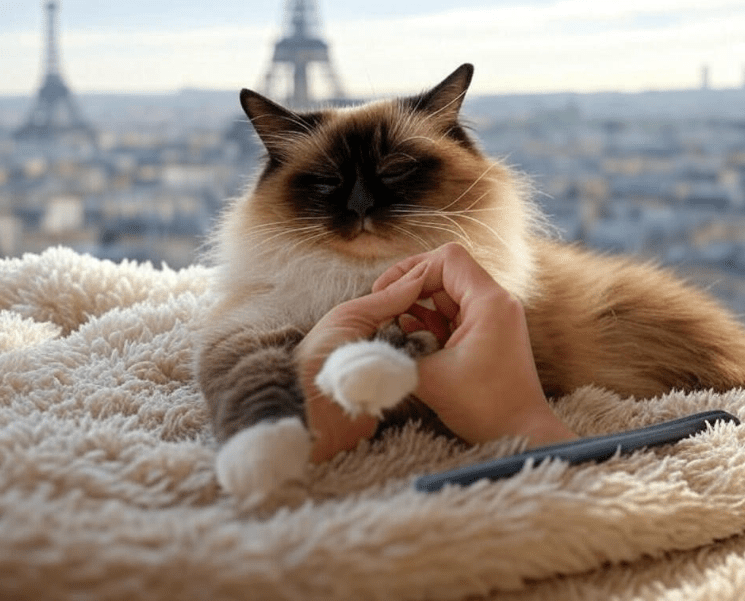
1. Lethargy or Reduced Activity
Ragdolls are moderately active, enjoying playtime and interaction. If your cat becomes unusually tired, avoids jumping, or sleeps more than usual, it could indicate reduced cardiac output.
What to Watch For: Reluctance to play, lying down after minimal activity, or seeming “off” during normal routines.
Example: If your Ragdoll no longer chases their favorite feather wand or rests after climbing stairs, take note.
2. Rapid or Labored Breathing
As HCM progresses, fluid may build up in or around the lungs, making breathing harder. Even in early stages, you might notice faster breathing at rest or after exertion.
What to Watch For: Breathing rates above 30 breaths per minute at rest, open-mouth breathing, or panting after mild activity.
How to Check: Count your cat’s breaths over 15 seconds while they’re resting (not purring) and multiply by 4. Normal is 15–30 breaths per minute.
3. Heart Murmur
A heart murmur, detected by a veterinarian during a physical exam, is often the first clue of HCM. It’s caused by turbulent blood flow through a thickened heart muscle.
What to Watch For: Your vet may mention a murmur during routine checkups, even if your Ragdoll seems healthy.
Note: Not all murmurs indicate HCM, but they warrant further investigation in Ragdolls.
4. Decreased Appetite or Weight Loss
HCM can reduce oxygen delivery to the body, affecting appetite and metabolism. Some Ragdolls may eat less or lose weight despite no dietary changes.
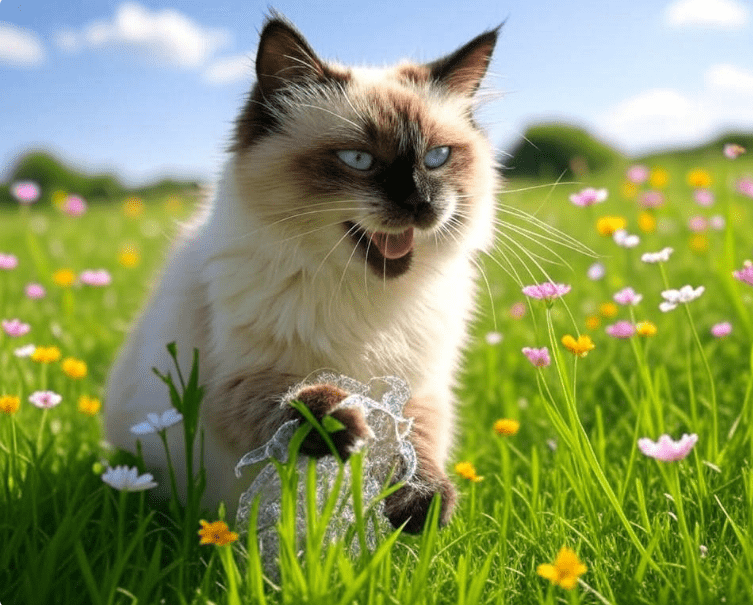
What to Watch For: Smaller portion consumption, disinterest in treats, or gradual weight loss over weeks or months.
Tip: Weigh your Ragdoll monthly using a digital scale to track changes.
5. Fainting or Weakness (Syncope)
In rare cases, early HCM causes arrhythmias that lead to temporary loss of consciousness or weakness. This is more common in advanced stages but can occur earlier.
What to Watch For: Sudden collapse, stumbling, or brief episodes of unresponsiveness, often followed by quick recovery.
Action: Seek immediate veterinary care if this occurs, as it’s a serious sign.
6. Hind Limb Weakness or Paralysis
A blood clot (thromboembolism) caused by HCM can block blood flow to the hind legs, leading to sudden weakness or paralysis. While more common in later stages, it’s a critical sign to recognize.
What to Watch For: Dragging hind legs, vocalizing in pain, or cold paws in the hind limbs.
Urgency: This is a medical emergency requiring immediate veterinary attention.
7. Subtle Behavioral Changes
Ragdolls with early HCM may show personality shifts due to discomfort or reduced energy.
What to Watch For: Increased hiding, less interest in social interaction, or irritability when handled.
Example: If your normally affectionate Ragdoll avoids cuddles, it could signal an underlying issue.
How to Monitor Your Ragdoll for HCM
Proactive monitoring can help you catch signs of hypertrophic cardiomyopathy in Ragdolls before they escalate. Here’s how to stay vigilant:
1. Regular Veterinary Checkups
Schedule annual or biannual vet visits, especially for Ragdolls over 2 years old. Your vet can:
1.Listen for heart murmurs or irregular rhythms.
2.Assess breathing patterns and overall health.
3.Recommend baseline tests like bloodwork to rule out other conditions.
2. Track Breathing Rates at Home
Monitor your Ragdoll’s resting respiratory rate weekly. A consistent increase could indicate early heart or lung issues.
How to Do It: Observe your cat when they’re relaxed (not playing or purring). Count breaths for 15 seconds and multiply by 4.
When to Act: Rates above 30 breaths per minute or a noticeable upward trend should prompt a vet visit.
3. Watch for Activity Changes
Keep a mental log of your Ragdoll’s energy levels and play habits. Sudden or gradual declines may warrant investigation.
Tip: Use a journal or app to note changes in activity, appetite, or behavior over time.
4. Genetic Testing
If your Ragdoll’s lineage isn’t screened for HCM, consider genetic testing through your vet or a specialized lab. While not definitive for disease development, it provides valuable risk information.
Diagnosing HCM in Ragdolls
If you notice potential signs of hypertrophic cardiomyopathy in Ragdolls, your veterinarian will use a combination of tools to confirm the diagnosis. Early detection relies on thorough testing, as symptoms alone aren’t enough.
1. Physical Examination
Your vet will listen for heart murmurs, check pulse strength, and assess breathing. A murmur is a common finding but requires further tests to confirm HCM.

2. Echocardiogram (Heart Ultrasound)
An echocardiogram is the gold standard for diagnosing HCM. It visualizes the heart’s structure, revealing thickened walls or abnormal blood flow.
What It Shows: Wall thickness, chamber size, and valve function.
Why It’s Important: It can detect HCM before symptoms become severe.
Note: This test requires a veterinary cardiologist or a vet with ultrasound expertise.
3. Electrocardiogram (ECG)
An ECG measures the heart’s electrical activity, detecting arrhythmias that may accompany HCM.
When Used: If fainting or irregular rhythms are suspected.
Limitations: It’s less specific than an echocardiogram but complements other tests.
4. Chest X-Rays
X-rays can reveal heart enlargement or fluid in the lungs, which may indicate advanced HCM or heart failure.
When Used: To assess breathing difficulties or confirm complications.
Tip: X-rays are often paired with an echocardiogram for a complete picture.
5. Blood Tests
Bloodwork can rule out other causes of symptoms (e.g., thyroid disease) and measure biomarkers like NT-proBNP, which may be elevated in heart disease.
Why It Helps: It provides a baseline for your Ragdoll’s overall health.
Limitations: It’s not specific to HCM but supports diagnosis.
Managing HCM in Ragdolls
If your Ragdoll is diagnosed with HCM, early intervention can slow disease progression and improve quality of life. Management focuses on symptom control and complication prevention, as there’s no cure for HCM.
1. Medications
Your vet may prescribe medications to support heart function and reduce risks:
Beta-Blockers (e.g., Atenolol): Slow heart rate and reduce strain on the heart.
ACE Inhibitors (e.g., Enalapril): Improve blood flow and reduce fluid buildup.
Diuretics (e.g., Furosemide): Remove excess fluid from the lungs or abdomen.
Anti-Clotting Drugs (e.g., Clopidogrel): Prevent blood clots that could cause paralysis.
Note: Never give human heart medications to your cat, as they can be toxic.
2. Dietary Adjustments
A heart-healthy diet can support your Ragdoll’s condition:
Low-Sodium Food: Reduces fluid retention and heart strain.
Omega-3 Supplements: May improve heart function (consult your vet).
Balanced Nutrition: Ensures adequate taurine, essential for feline heart health.
Tip: Work with your vet to choose a prescription diet if needed.
3. Stress Reduction
Stress can exacerbate HCM symptoms, so create a calm environment:
Quiet Space: Provide a safe, comfortable area for rest.
Routine: Maintain consistent feeding, play, and sleep schedules.
Pheromone Products: Feliway diffusers can reduce anxiety.
4. Regular Monitoring
Schedule follow-up echocardiograms and vet visits to track disease progression. Your vet may adjust medications based on changes in your Ragdoll’s condition.
5. Emergency Preparedness
Know the signs of a crisis, such as sudden breathing difficulty or hind limb paralysis, and have an emergency vet’s contact information ready.
Preventing Complications from HCM
While HCM itself can’t be prevented in genetically predisposed Ragdolls, you can reduce complications by:
Early Screening: Regular echocardiograms (every 1–2 years) can catch HCM before symptoms appear.
Weight Management: Keep your Ragdoll at a healthy weight to reduce heart strain.
Exercise Moderation: Encourage gentle play but avoid overexertion.
Spaying/Neutering: Hormonal changes in intact cats may worsen HCM risk in males.
Common Myths About HCM in Ragdolls
Misinformation can delay diagnosis or cause unnecessary worry. Let’s debunk some myths:
Myth: Only old Ragdolls get HCM.
Fact: HCM can develop in young adult cats, often after 2–3 years of age.
Myth: A normal vet exam rules out HCM.
Fact: Early HCM may not cause murmurs, requiring an echocardiogram for confirmation.
Myth: HCM always causes obvious symptoms.
Fact: Many Ragdolls are asymptomatic in early stages, making screening vital.
Myth: HCM is always fatal.
Fact: With early detection and management, many Ragdolls live years with HCM.
Expert Tips for Ragdoll Owners
Veterinarians and feline cardiologists recommend these strategies to stay ahead of HCM:
Start Screening Early: Begin echocardiograms at 1–2 years of age, especially for cats with a family history of HCM.
Know Your Cat’s Baseline: Familiarize yourself with their normal breathing rate, appetite, and energy levels to spot changes quickly.
Work with Specialists: A veterinary cardiologist can provide advanced diagnostics and tailored treatment plans.
Stay Informed: Join Ragdoll owner communities to learn from others’ experiences with HCM.
Conclusion
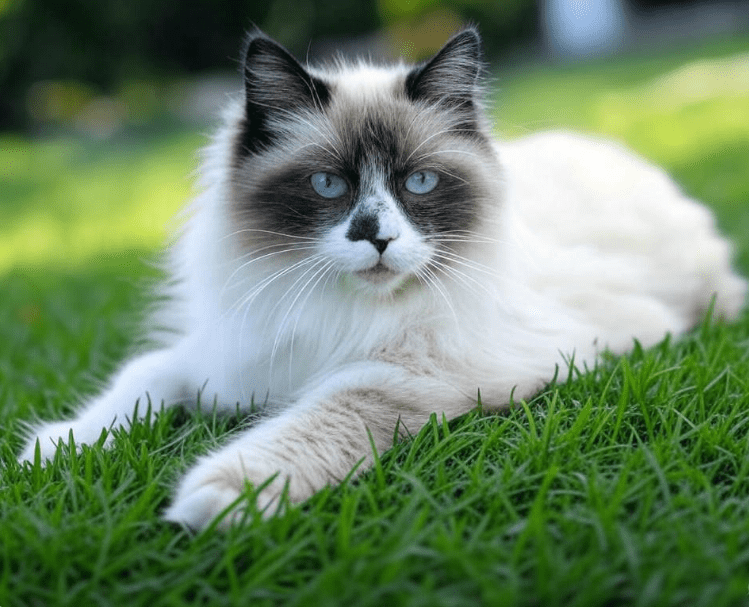
Spotting the signs of hypertrophic cardiomyopathy in Ragdolls early can make all the difference in your cat’s health and longevity. By staying alert to symptoms like lethargy, rapid breathing, or behavioral changes, and committing to regular veterinary screenings, you can catch HCM before it becomes severe. Armed with this guide’s insights—covering symptoms, diagnostics, management, and prevention—you’re well-equipped to protect your Ragdoll’s heart health. With proactive care and a strong partnership with your veterinarian, your Ragdoll can continue to bring joy to your life for years to come.


